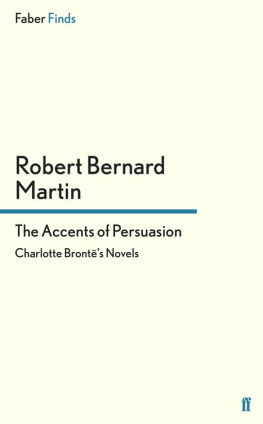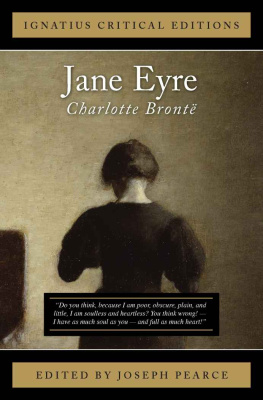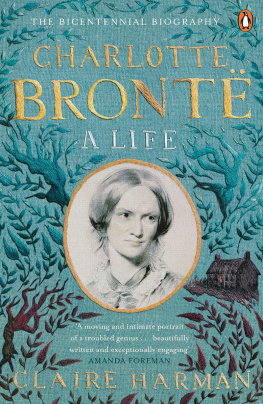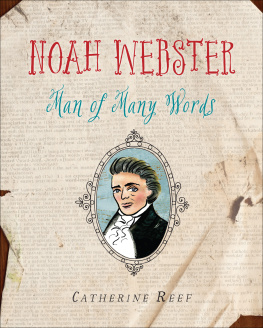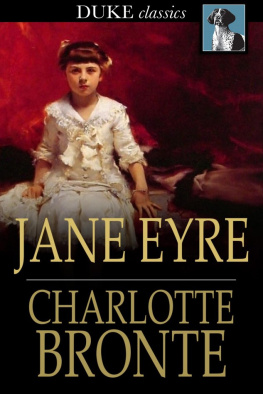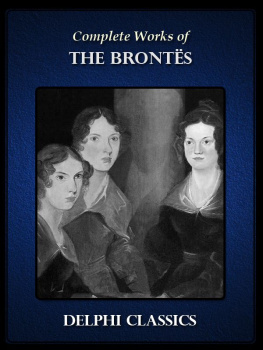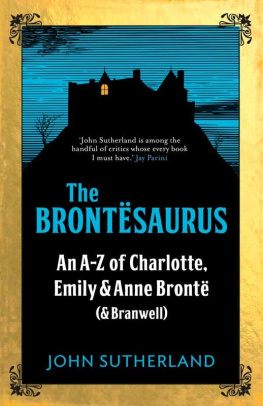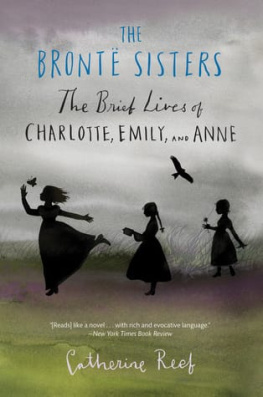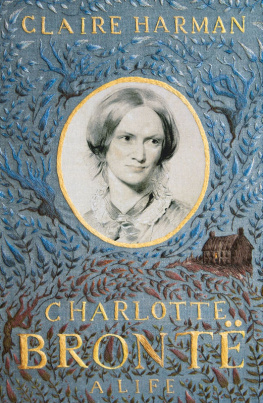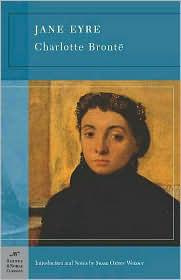The Bells are very sincere in their worship of Truth, and they hope to apply themselves to the consideration of Art, so as to attain one day the power of speaking the language of conviction in the accents of persuasion.
References for quotations from Miss Bronts four novels and the three other works frequently cited are inserted directly into the text following the quotations themselves. Quotations from the novels are taken from the first editions as listed below; obvious errors in punctuation and spelling have been silently corrected. For the convenience of readers using more recent editions, modern chapter numbers are given, followed by volume and page references to first editions.
TheProfessor:ATale, 2 vols. (Smith, Elder, and Co., London, 1857.)
JaneEyre:AnAutobiography, 3 vols. (Smith, Elder, and Co., London, 1847.)
Shirley:ATale, 3 vols. (Smith, Elder, and Co., London, 1849.)
Villette, 3 vols. (Smith, Elder, and Co., London, 1853.)
Abbreviations for works frequently cited:
Gaskell E[lizabeth] C. Gaskell: TheLifeofCharlotteBront (Smith, Elder, and Co., London, 1857.) Once more, modern chapter numbers precede volume and page references to the first edition.
SHBTheBronts:TheirLives,FriendshipsandCorrespondence, ed. Thomas J. Wise and J. Alexander Symington, 4 vols. ( Shakespeare Head Press, Oxford, 1932.)
Shorter Clement Shorter: TheBronts:LifeandLetters, 2 vols. (Hodder and Stoughton, London, 1908.)
Since the book is divided into four chapters, each of which deals with one of Miss Bronts novels, and since the same concerns with passion, imagination, moral intelligence, intellect, reason, self-knowledge, maturity, subjectivity, objectivity, etc. occur repeatedly in each chapter and form the argument itself of the book, I have not included an index. Normally, such an omission detracts from the convenience of readers, but in this case the only index that would make complete sense would be one that included nothing but the titles of the four novels; further division, it seems to me, would only lead to obfuscation.
With the sense of eternity upon him, King Lear referred contemptuously to the fickleness of popularity, and those who live by it he called packs and sects of great ones/That ebb and flow by th moon. Such a lunar flux has scant relevance to the esteem in which the Bronts have been held for over a hundred years. It is now nearly a quarter of a century since that pioneer in modern Bront studies, Miss Ratchford, lamented the torrent of biographies of the secluded Yorkshire family, the riddling Keys, Vindications, Freudian studies, and the steamy plays and novels insecurely based on their lives. So great was the number of books and monographs that Miss Ratchford noted with an understandable weariness that no other writers save Shakespeare and Byron had provoked so much attention as had Charlotte and Emily Bront. The renaissance of interest in the Victorians since World War II has only served to swell the rushing stream of Bront studies into a sometimes polemically raging flood.
The Haworth hagiography, like other saints legends, serves to objectify many of the mysterious aspects of mans life, to exemplify the influence of the dark forces swaying that existence. Precisely because they make concrete what we sometimes dimly suspect or fear, these writings, like other hagiographies, have tended to be both scrupulous (even disputatious ) about factual detail and irresponsibly speculative about motive. The bare facts are so literally improbable as to tease one into considering the lives of the Bronts themselves as some wild metaphorical statement of the Romantic conception of the world. Aside from the hundreds of thousands of persons who have read JaneEyre or WutheringHeights, there must be an equal number of others, innocent of knowledge of the novels, who have been at least momentarily captured by the story of that gaunt parsonage and the Gothic lives of its inhabitants, and somehow made uneasy about the world in which it was played out. The fevers of Cowan Bridge; Tabby; the four children writing their stories of Angria and Gondal in the tiny room above the front door; Patrick Bront, firing his pistols from the windows of his bedroom; the foreboding sound of the gravemasons chisel in the churchyard; Keepers beating at the hands of Emily; Charlottes stay in the establishment of M. Hger; the three sisters with linked arms walking endlessly around the sitting-room table; the confrontation of George Smith by Emily and Charlotte; Emilys dying gaze failing to recognize the sprig of heather brought her by Charlotte from the wintry moors; Annes gentle fading from life at Scarborough; the fatal pregnancy that ended Charlottes brief marriage; beyond them all the moor with its violent winds and gentle flowers, and its unchanging, recurrent cycle of seasons oblivious to the pathetic series of funeral processions as the family dwindled: the beads of the Bront rosary slip easily through the fingers.
It would be an unimaginative mind indeed that was unstirred by the lives of the Bronts, and it would require a heart more steadfast than most would care to own to be unmoved by pity for them. Many of us have felt at some time as Swinburne did when he wrote in 1877: From the first hour when as a schoolboy I read JaneEyre and WutheringHeights I have always retained the first intense desire I felt then to know all that I might or ought to know about the two women who wrote them. Even Matthew Arnold, whose meeting with Charlotte was a somewhat qualified success, remembered it so vividly that it formed the centre of his elegiac poem, Haworth Churchyard, with its evocation of the sisterly band and
the church [that]
Standsonthecrestofthehill,
Lonelyandbleak;atitsside
Theparsonage-houseandthegraves.
Somewhat uncharacteristically, Arnold treated the sisters as persons rather than as metaphors for the creative spirit, and he was so moved by the sombre story of their lives that his habitually reserved muse soared at the thought of Emily,
she,whosank
Baffled,unknown,self-consumed;
Whosetoobolddyingsong
Stirrd,likeaclarion-blast,mysoul.
Even the best of biography, however, may tend to serve history rather than literature, and one may be forgiven for wishing to return from their lives to the works of the sisters Bront. One of the dangers of too great absorption with the biographies of writers is that their books are apt to be forgotten . There is another dangerand possibly a worse onewhich is that the books may become important only so far as they can be taken as mirrors of the lives of their creators. Either the critic stresses only those aspects of the books that he can demonstrate as paralleling the life of the author, or he inverts the process and searches the novels for biographical fact, assuming that what occurs in the books must necessarily have an exact and literal precedent in the life of the writer. The possibility that diurnal life may undergo a sea-change in being transformed into art is discounted.

